Abstract
Picosecond time-dependent fluorescence depolarization techniques have been used to monitor the reorientation of ethidium bromide intercalated in DNA and RNA. The fluorescence polarization anisotropy reveals a nonexponential, exp(-at 1/2), torsional relaxation of the DNA double helix and provides an accurate value for its torsional rigidity, C = 1.3 +/- 0.2 X 10(-19) erg cm. Furthermore, from accurate measurements of the limiting anisotropy at zero time, we conclude that there is an additional fast (< 10 psec) internal motion that depends on the viscosity of the medium. Denatured DNA is considerably more flexible than the intact double helix, thus demonstrating the influence of secondary structure on internal motions.
Full text
PDF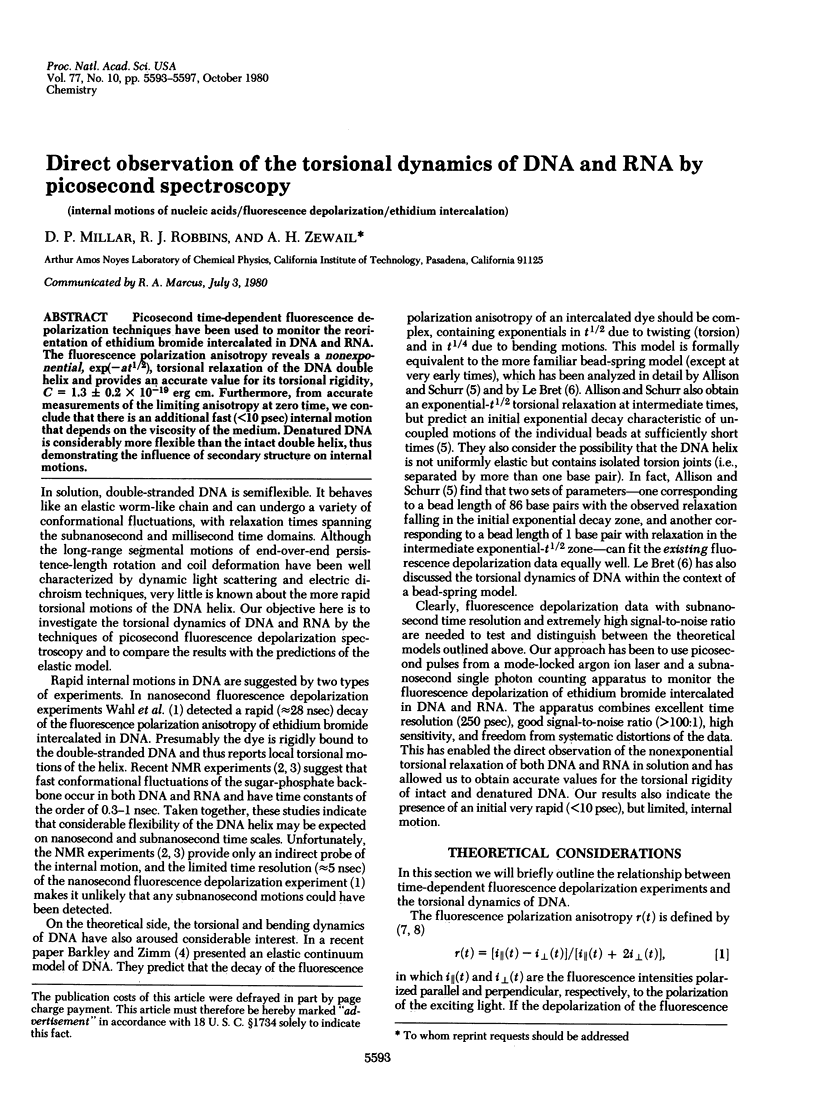
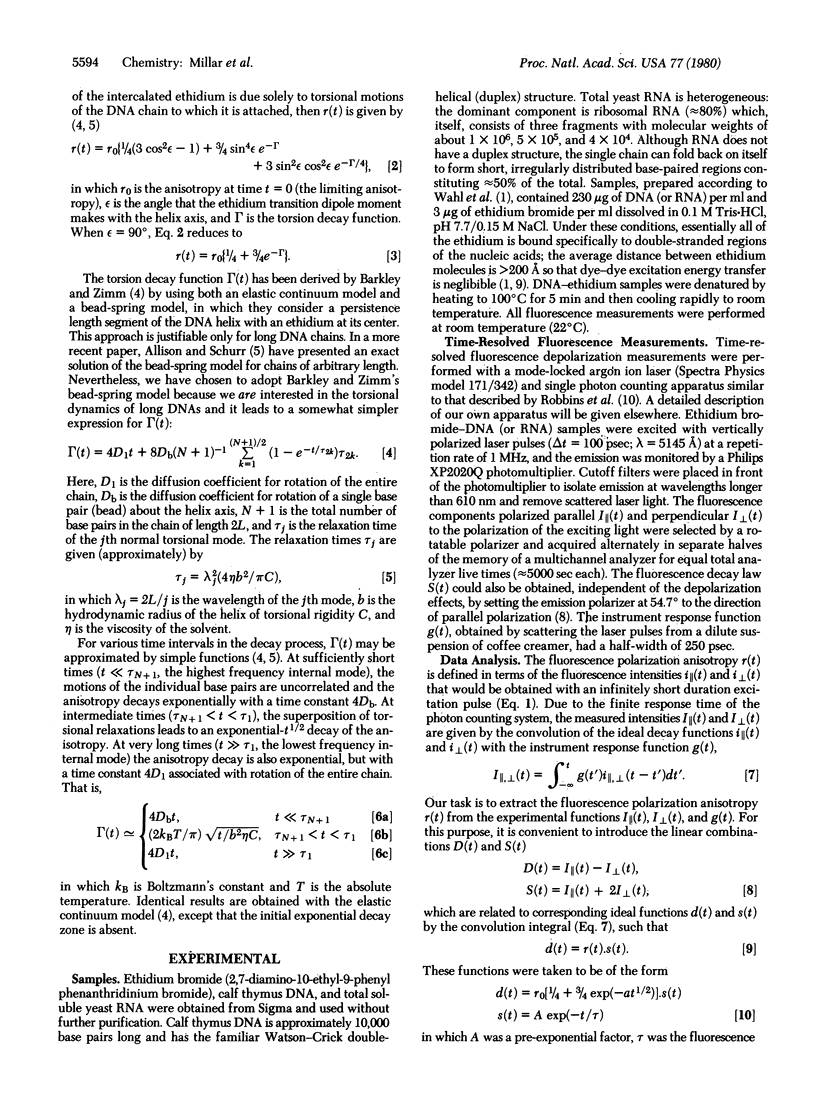
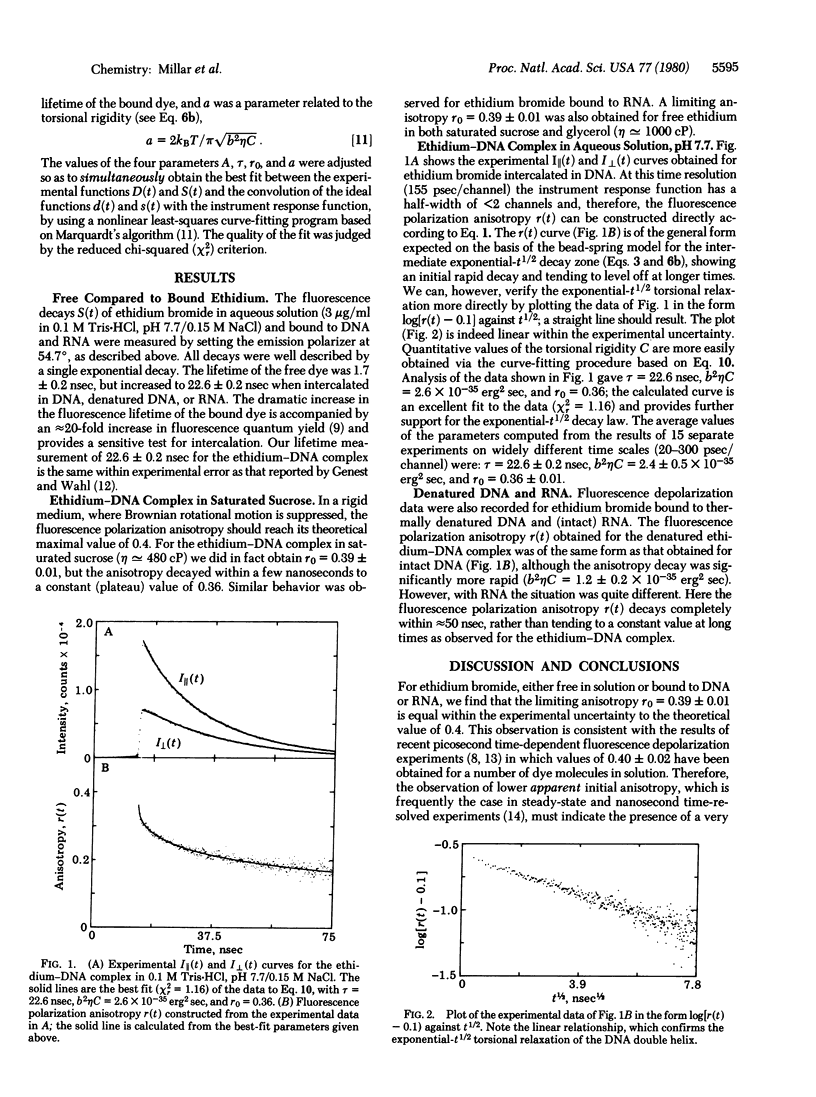
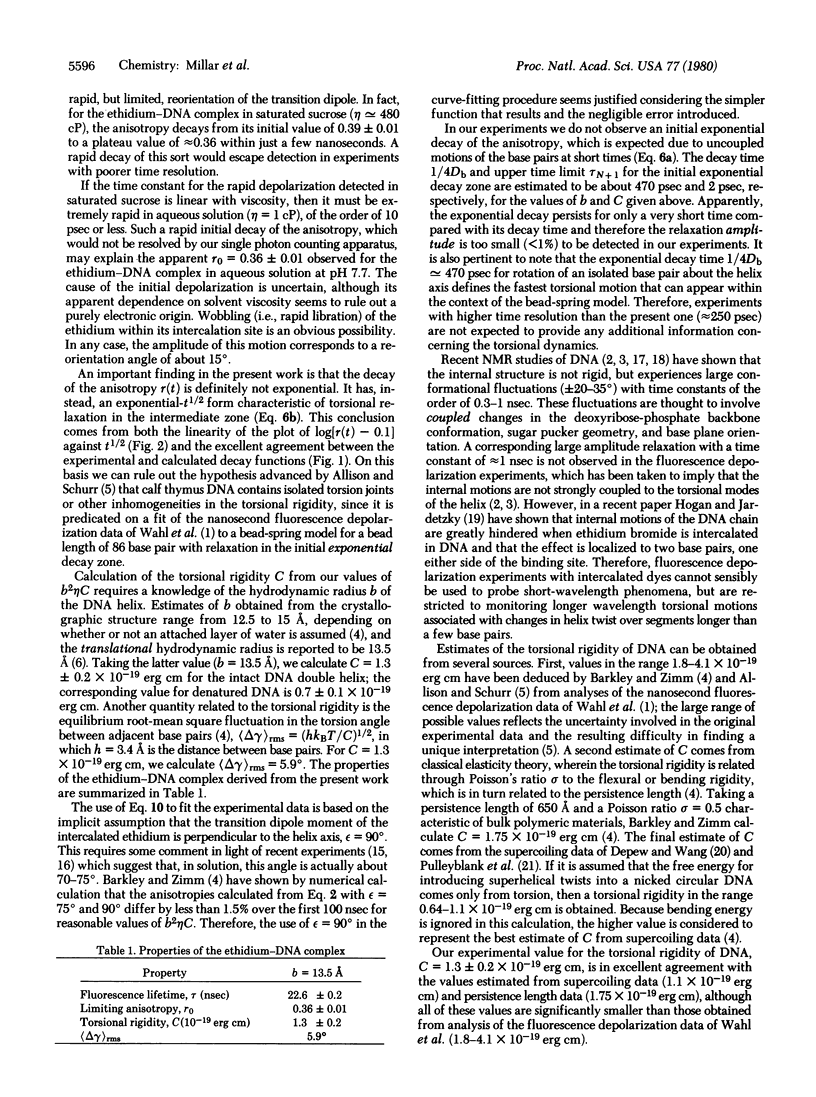
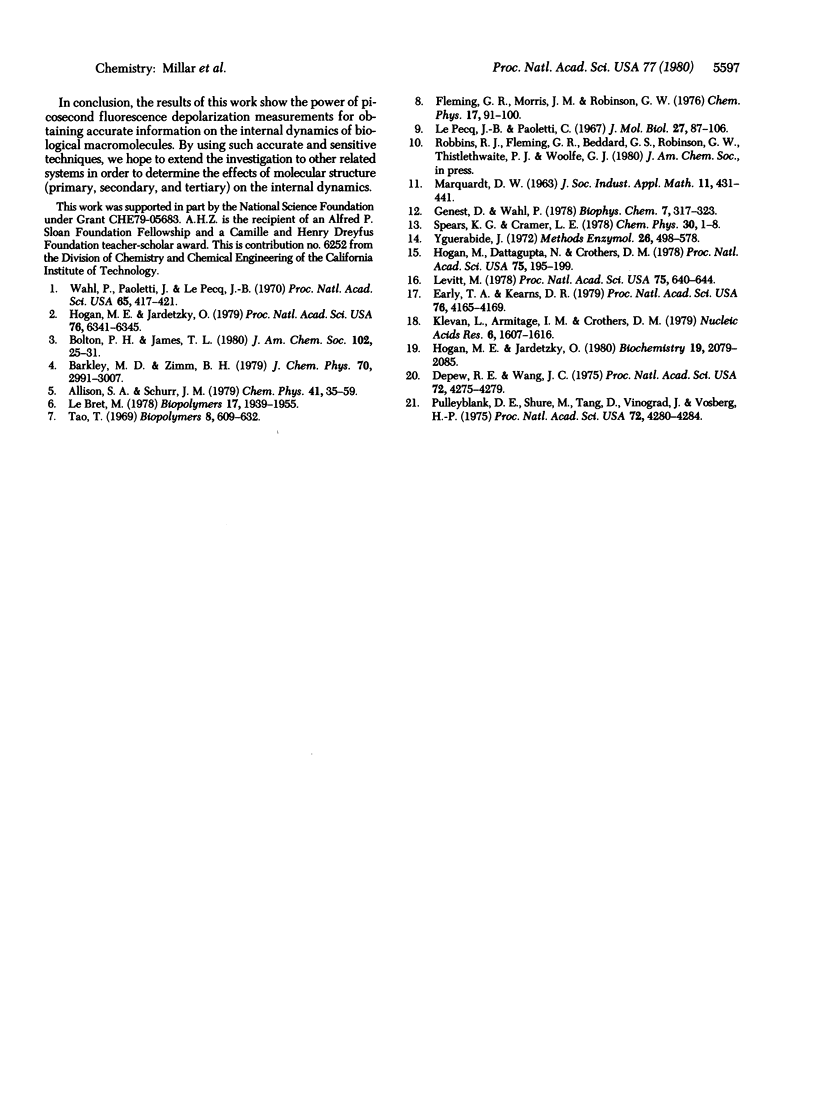
Selected References
These references are in PubMed. This may not be the complete list of references from this article.
- Depew D. E., Wang J. C. Conformational fluctuations of DNA helix. Proc Natl Acad Sci U S A. 1975 Nov;72(11):4275–4279. doi: 10.1073/pnas.72.11.4275. [DOI] [PMC free article] [PubMed] [Google Scholar]
- Early T. A., Kearns D. R. 1H nuclear magnetic resonance investigation of flexibility in DNA. Proc Natl Acad Sci U S A. 1979 Sep;76(9):4165–4169. doi: 10.1073/pnas.76.9.4165. [DOI] [PMC free article] [PubMed] [Google Scholar]
- Genest D., Wahl P. Pulse fluorimetry study in polarized light of DNA-ethidium bromide complexes. Biophys Chem. 1978 Jan;7(4):317–323. doi: 10.1016/0301-4622(78)85008-x. [DOI] [PubMed] [Google Scholar]
- Hogan M. E., Jardetzky O. Effect of ethidium bromide on deoxyribonucleic acid internal motions. Biochemistry. 1980 May 13;19(10):2079–2085. doi: 10.1021/bi00551a012. [DOI] [PubMed] [Google Scholar]
- Hogan M. E., Jardetzky O. Internal motions in DNA. Proc Natl Acad Sci U S A. 1979 Dec;76(12):6341–6345. doi: 10.1073/pnas.76.12.6341. [DOI] [PMC free article] [PubMed] [Google Scholar]
- Hogan M., Dattagupta N., Crothers D. M. Transient electric dichroism of rod-like DNA molecules. Proc Natl Acad Sci U S A. 1978 Jan;75(1):195–199. doi: 10.1073/pnas.75.1.195. [DOI] [PMC free article] [PubMed] [Google Scholar]
- Klevan L., Armitage I. M., Crothers D. M. 31P NMR studies of the solution structure and dynamics of nucleosomes and DNA. Nucleic Acids Res. 1979 Apr;6(4):1607–1616. doi: 10.1093/nar/6.4.1607. [DOI] [PMC free article] [PubMed] [Google Scholar]
- LePecq J. B., Paoletti C. A fluorescent complex between ethidium bromide and nucleic acids. Physical-chemical characterization. J Mol Biol. 1967 Jul 14;27(1):87–106. doi: 10.1016/0022-2836(67)90353-1. [DOI] [PubMed] [Google Scholar]
- Levitt M. How many base-pairs per turn does DNA have in solution and in chromatin? Some theoretical calculations. Proc Natl Acad Sci U S A. 1978 Feb;75(2):640–644. doi: 10.1073/pnas.75.2.640. [DOI] [PMC free article] [PubMed] [Google Scholar]
- Pulleyblank D. E., Shure M., Tang D., Vinograd J., Vosberg H. P. Action of nicking-closing enzyme on supercoiled and nonsupercoiled closed circular DNA: formation of a Boltzmann distribution of topological isomers. Proc Natl Acad Sci U S A. 1975 Nov;72(11):4280–4284. doi: 10.1073/pnas.72.11.4280. [DOI] [PMC free article] [PubMed] [Google Scholar]
- Wahl P., Paoletti J., Le Pecq J. B. Decay of fluorescence emission anisotropy of the ethidium bromide-DNA complex. Evidence for an internal motion in DNA. Proc Natl Acad Sci U S A. 1970 Feb;65(2):417–421. doi: 10.1073/pnas.65.2.417. [DOI] [PMC free article] [PubMed] [Google Scholar]
- Yguerabide J. Nanosecond fluorescence spectroscopy of macromolecules. Methods Enzymol. 1972;26:498–578. doi: 10.1016/s0076-6879(72)26026-8. [DOI] [PubMed] [Google Scholar]


